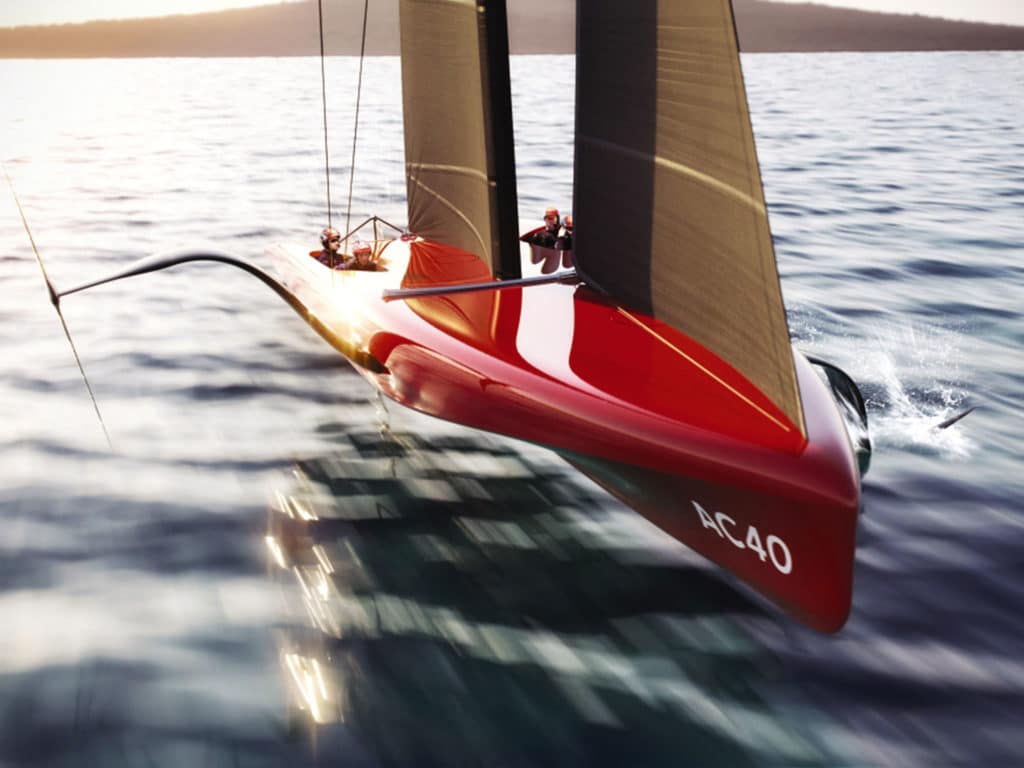
What would the America’s Cup be without its legendary Deed of Gift, the armies of lawyers, the backroom dealings, international intrigue and high-stakes innovation? It would be, of course, just another sailboat race. But the Cup, we know, is anything but ordinary. It was, therefore, not surprising when the Royal New Zealand Yacht Squadron, Team New Zealand and its Challenger of Record, Royal Yacht Squadron Ltd. and their representative Team INEOS Britannia finally revealed the 37th America’s Cup Protocol in November, leaving more questions than answers—the biggest among them being where exactly the show would go on.
Auckland again? Maybe, but the New Zealanders are crying poor and shopping elsewhere for someone to foot the bill for their regatta in 2024. The small inner circle of teams continuing from the 36th edition, however, have fingers crossed the action will return to Waitematˉa Harbour. American Magic’s Terry Hutchinson, who is anxious to restart operations and blow the dust off millions of dollars’ worth of shrink-wrapped equipment and intellectual property, is keen on Auckland.
As of the protocol’s release, however, American Magic was still without an official club, as was the squad of Stars+Stripes, who—for a fleeting moment—had secured the blessing of New York YC before flag officers hit the pause button on its Cup aspirations. Should either of these two would-be American challengers officially enter after December 1, stipulations outlined in the protocol and the updated AC75 class rule present a gigantic to-do list.
While the party line from Defender and Challenger of Record is that of cost savings, the protocol hints otherwise. To compete, each challenger must field one AC75 (new or used) and buy a new AC40 (or two), which would (or could) be used as a development platform before being returned to one-design form and repurposed for potential women’s and youth America’s Cup regattas. Teams may also be required to pony up for two hydrogen-powered foiling chase boats. Savings, says Team New Zealand’s Grant Dalton, will be through the implementation of shared recon, starting software and weather services, the details of which had not been outlined.
It’s early days yet, but as Hutchinson knows well enough, days pass quickly in the Cup game. “This is potentially a lot more complicated from a rules perspective than the last one was,” Hutchinson says. “On the surface, there are some parts that look good with the shared things, but then you have to nut into how they will be paid for and who’s controlling who gets what. I think there is a genuine attempt to make AC37 better than AC36, but only time will tell.”
The AC40, which is essentially supplied equipment, Hutchinson says, presents a unique challenge and an urgency to enter the regatta sooner than later as these will be allocated based on the order of entry. “You have to think hard about how it impacts your development,” he says. “For example, how is using Patriot (their second AC75 from the previous Cup) going to fit into the program? How much time and energy do we put into that boat to understand a third-generation boat, versus foil development for an AC40?”
An updated Version 2 of the AC75 Class Rule was simultaneously released with the protocol, and according to Daniel Bernasconi, TNZ’s technical director, the most notable updates are aimed at improving the boat’s takeoff speeds lower into the wind range with larger wingspans and deeper foils, as well as three fewer crew, hinting a possible return of cyclors—should any team want to go there again. Code Zeros are gone too.
The protocol also outlines restrictions on when AC75s can be sailed, with “existing teams” being allowed to sail their AC75s after mid-September 2022. A new challenger with a secondhand AC75 would be allowed to sail its AC75 for 20 days starting in June. The crew nationality rule requires 100 percent of the race crew to either be a passport holder of the country of the team’s yacht club as of March 2022 or have been in the country in 2021.
There will be as many as three preliminary regattas; the first two will be raced in AC40s, and the third will be held at the match venue in AC75s. The Challenger Selection Series and the America’s Cup match will be held in 2024, with the match venue and approximate event dates to be announced by March 31, 2022.









